Parma |
|
|
|
| Übersicht – Contents: | |
Parma |
|
|
|
| Übersicht – Contents: | |
Flaggen – Flags: |
|
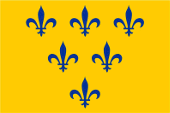 |
1545–1731, Haus/House of/ Farnese, Staatsflagge – state flag, Quelle/Source, nach/by: Wikipedia (D) |
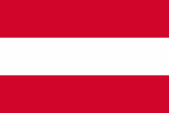 |
1735–1802, Haus/House of/ Habsburg/Bourbon-Parma, Staatsflagge – state flag, Quelle/Source, nach/by: World Statesmen |
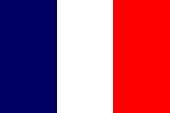 |
1802–1814, Parma gehört zu Frankreich – Parma belongs to France |
 |
1815–1848, Haus/House of/ Habsburg, Staatsflagge – state flag, Quelle/Source, nach/by: World Statesmen |
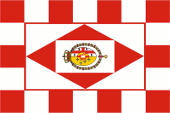 |
1815–1847, Haus/House of/ Habsburg, Handelsflagge – merchant flag, Quelle/Source, nach/by: World Statesmen |
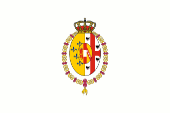 |
1815–1847, Haus/House of/ Habsburg, Flagge des Herzogs – flag of the Duke, Quelle/Source, nach/by: World Statesmen |
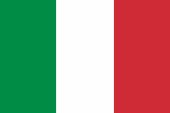 |
1848, Staatsflagge – state flag, Quelle/Source, nach/by: World Statesmen |
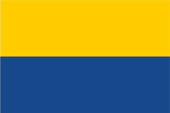 |
1848–1849, Haus/House of/ Bourbon-Parma, Staatsflagge – state flag, Quelle/Source, nach/by: World Statesmen |
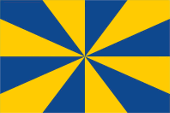 |
1850–1851, Haus/House of/ Bourbon-Parma, Staatsflagge – state flag, Quelle/Source, nach/by: World Statesmen |
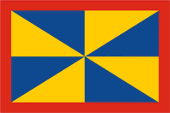 |
1851–1859, Haus/House of/ Bourbon-Parma, Staatsflagge – state flag, Quelle/Source, nach/by: Wikipedia (D) |
|
|
|
Bedeutung/Ursprung der Flagge – Meaning/Origin of the Flag: |
|
| Das Flagge des Herzogtums Parma zeigte ursprünglich das Bild des Wappens der Familie Farnese, sechs blaue Lilien auf Gold. Nach dem Ende der Herrschaft der Familie Farnese, dürften die Flaggen der jeweils herrschenden Dynastien verwendet worden sein. Im Jahre 1815 (Wiener Kongress) wurde das Herzogtum Parma, unter der Herzogin Marie-Louise von Österreich wiederhergestellt, und es ist eine senkrecht gestreifte Flagge in den Farben Rot und Weiß überliefert. Möglicherweise gehen die Farben auf die Hausfarben der Östereichischen Habsburger zurück, die den rot-weiß-roten Bindenschild der Babenberger verwendeten. Ab 1847 regierte wieder das Haus Bourbon, mit der Nebenlinie Bourbon-Parma, und es wurde eine waagerecht gestreifte Flagge in den Farben Gelb und Blau eingeführt. Es könnte sich um die Hausfarben der Linie Boubon-Parma handeln, oder was wahrscheinlicher ist, um eine Wiederbelebung der alten Farben von Parma, den Farben des Hauses Farnese, die ab 1850 geständert wiedergegeben wurden, und ab 1851 – bis zum Ende des Herzogtums im Jahre 1859 – noch zusätzlich mit einem roten Rand umgeben wurden. | The flag
of the Duchy of Parma showed originally the image of the coat of arms of the
Farnese family, six blue lilies on gold. After the end of the reign of the
Farnese family , the flags of each ruling dynasties may have been used. In 1815 (Congress of Vienna) , the Duchy of Parma was restored under the Duchess Marie-Louise of Austria, and it is handet over a vertically striped flag in the colors red and white. Maybe the colors go back to the house colors of the Austrian Habsburgs, who used the red-white-red shield of the House of Babenberg. From 1847 reigned
again the House of Bourbon, the Bourbon-Parma sideline, and it was
introduced a horizontally striped flag in the colors yellow and blue. This
could be the house colors of the line Boubon-Parma , or, more likely, a
revival of the old colors of Parma, the colors of the Farnese family, which
were reproduced from 1850 in an other arrangement, and from 1851 – to the
end of the Duchy in 1859 – were additionally surrounded by a red border. |
| Quelle/Source: Wikipedia (D), World Statesmen, Volker Preuß | |
Wappen – Coat of Arms: |
|
 |
1545–1731, Haus/House of/ Farnese, Wappen von Parma – coat of arms of Parma, Quelle/Source, nach/by: Wikipedia (D) |
 |
1815–1847, Haus/House of/ Habsburg, Wappen von Parma – coat of arms of Parma, Quelle/Source, nach/by: Wikipedia (IT) |
Bedeutung/Ursprung des Wappens – Meaning/Origin of the Coat of Arms: |
|
| Das Wappen des Herzogtums Parma ist ursprünglich das Wappen der Familie Farnese. Es zeigte sechs blaue Lilien auf Gold. Dieses heraldische Bild taucht dann immer wieder in der Heraldik der Wappen der Herzöge von Parma auf, ganz gleich aus welchem adligen Hause sie kamen, Habsburg oder Bourbon. Auch Napoléons Sohn Franz Joseph Karl Bonaparte führte zwischen 1814 und 1817 den Titel "Prinz von Parma", und auch sein Wappen zeigte die sechs Lilien. | The coat of arms of the Duchy of Parma was originally the coat of arms of the Farnese family. It showed six blue lilies on gold. This heraldic image then appears again and again in the heraldry of the coat of arms of the Dukes of Parma on, from whatever noble house they came, Habsburg or Bourbon. Even Napoleon's son Francis Joseph Charles Bonaparte used between 1814 and 1817 the title "Prince of Parma", and his coat of arms showed also the six lilies. |
| Quelle/Source: Wikipedia (D), Volker Preuß | |
| Historische Staaten in Italien – Historical states in
Italy: ca. 1850–1858 alle Staatsbezeichnungen in Englisch – all state denominations in English |
|
| Landkarte/Map: Volker Preuß |
Zahlen und Fakten – Numbers and Facts: |
|
|
|
|
|
|
|
|
|
|
|
| Quelle/Source: Meyers Konversationslexikon | |
Geschichte: |
|
Antike
· in der Region Parma siedeln Räter, Umbrer und Kelten ab 5. Jhd. v.Chr. · Einwanderung von Etruskern aus den Alpen ab 225 v.Chr. · römische Eroberung, Errichtung der Provinz Gallia cisalpina 89 v.Chr. · die Provinz Gallia cisalpina wird der Provinz Italien angegliedert 452 · Hunneneinfälle 476 · Absetzung des letzten römischen Kaisers Romulus Augustulus, Ende des (West)Römischen Reiches, die heutige Lombardei gehört bis 493 zum Reich des Odoaker 489 · Eroberung des Gebiets durch die Ostgoten 535 · Eroberung durch Byzanz (Ostrom) 568/569 · Eroberung und Besiedlung durch die Langobarden (zur Lombardei) 774 · Eroberung durch die Franken 781 · Eingliederung der Lombardei in das Frankenreich der Karolinger 843 · bei der Teilung des Frankenreiches kommt die Lombardei zum Königreich Italien 888 · Nach dem Aussterben der Karolinger zerfällt die Region in Kleinstaaten 961 · Otto I. bringt Parma an das Deutsche Königreich ca. 1000 · Parma tritt dem Lombardischen Bund gegen den deutschen Kaiser bei (Mailand, Bergamo, Lecco, Cremona, Mantua und Brescia) 1167 · der Lombardische Bund stellt sich gegen sich gegen den deutschen Kaiser Friedrich I. (Barbarossa) 1183 · Anerkennung der Unabhängigkeit des Lombardischen Bundes ca. 1215–1350 · Kämpfe zwischen Ghibellinen (Kaiserpartei) und Guelfen (Papstpartei) 1277 · Ottone Visconti übernimmt die Macht in Mailand, später beherrscht die Familie von Mailand aus die gesamte Lombardei 1395 · Gian Galeazzo Visconti erhält vom Deutschen König Wenzel von Luxemburg den Titel Herzog von Mailand 1450 · die Visconti sterben aus, die Familie Sforza übernimmt das Herzogtum Mailand 1499 · Frankreich interveniert in Norditalien, das Herzogtum Mailand wird französischer Besitz 1512 · Parma wird als eigenes Herzogtum durch den Papst vom Herzogtum Mailand abgetrennt 1545 · Parma wird von Papst Paul III. als Herzogtum an seinen Sohn Pier Luigi Farnese als Lehen vergeben 1547 · Pier Luigi Farnese wird ermordet, das Lehen wird an Ottavio Farnese übergeben, der auch Piacenza erhält (daher Herzogtum Parma und Piacenza) 1731 · Aussterben der Familie Farnese 1731–1735 · Parma kommt als Sekundogenitur an die spanischen Bourbonen 1735 · Wiener Präliminarfrieden, die spanischen Bourbonen tauschen Parma mit Kaiser Karl VI. gegen das Königreich beider Sizilien, Parma wird somit Österreichisch-Habsburgischer Besitz 1748 · Frieden von Aachen, Maria Theresia, Kaiserin von Österreich, tritt Parma und Piacenza und auch Guastalla (seitdem zu Parma) als Sekundogenitur der spanischen Bourbonen an den spanischen Infanten Philipp von Parma ab, es entsteht die Seitenlinie Bourbon-Parma 1796 · Eroberung Norditaliens durch französische Truppen, der Herzog von Parma muss sich seinen Titel und Besitz von Napoléon zurückkaufen 1802 · der Herzog stirbt, Napoléon übernimmt das Herzogtum und löst es auf 1805 · Annexion des ehemaligen Herzogtums durch das napolèonische Frankreich 1814/15 · Wiener Kongress, Wiederherstellung des Herzogtums Parma, unter der Herzogin Marie-Louise von Österreich, Ehefrau von Napoléon, ehemalige Kaiserin von Frankreich, Mutter von Napoleon Franz Joseph Karl Bonaparte, dem Herzog von Reichstadt und Prinzen von Parma 1847 · Tod von Herzogin Marie-Louise von Österreich, das Haus Bourbon-Parma kehrt auf den Thron von Parma zurück 1848 · Aufstand in Parma, Einleitung von Reformen, enge Anbindung an Österreich 1848–1849 · in fast ganz Italien Aufstand der Volksbewegung "Giòvane Itàlia" unter Mazzini und Garibaldi, Karl Albert von Sardinien-Piemont stellt sich an die Spitze der Erhebung, seine Truppen besetzten Parma, mussten es jedoch nach der Schlacht von Novara wieder räumen, die Österreichischen Truppen kehren zurück, die italienische Erhebung endet in Uneinigkeit 27.03.1854 · Herzog Karl stirbt an den Folgen eines Mordanschlags, sein minderjähriger Sohn Robert wird als Herzog proklamiert, seine Mutter Luise Bourbon wird als Regentin eingesetzt 1857 · die Österreichischen Truppen verlassen Parma 1859 · italienischer Unabhängigkeitskrieg gegen Österreich, das Volk von Parma fordert den Anschluss an Sardinien-Piemont, die Luise Bourbon flieht am 30.04. nach Mantua, wurde jedoch von den Truppen Parmas zurückgerufen und kehrte am 04.05. zurück, nach der Schlacht von Magenta zogen sich die Österreichischen Truppen zurück und Luise Bourbon geht am 09.06. ins Exil in die Schweiz 18.03.1860 · nach einer Volksabstimmung erfolgt der Anschluss des Landes an Sardinien-Piemont 17.03.1861 · Krönung von Viktor Emanuel II. von Sardinien-Piemont zum König des Königreichs Italien 1947 · Gründung der Region Emìlia-Romagna als italienische Verwaltungseinheit, sie umfasst die Gebiete der ehemaligen Staaten Herzogtum Parma, Herzogtum Modena und des Kirchenstaates (Patrimonium Petri) |
History: |
|
antiquity
· in the today's region of Parma settle Raetians, Umbrians and Celts since 5th cent. B.C. · immigration of Etruscians from the Alpes since 225 B.C. · Roman conquest, establishment of the Province of Gallia Cisalpina 89 B.C. · the Province of Gallia Cisalpina gets incorporated into the Province of Italy 452 · Hun's invasions 476 · dismissal of the last Roman emperor Romulus Augustulus, end of the (West)Roman Empire, the today's Lombardy belongs until 493 to the Empire of the Odoaker 489 · conquest of the region by the Eastern Goth 535 · conquest by Byzantium (East Rome) 568/569 · conquest and settlement by the Langobardes (to the Lombardy) 774 · conquest by the Franks 781 · incorporation of the Lombardy into the Frankish Empire of the Carolingians 843 · at the division of the Frankish Empire comes the Lombardy to the Kingdom of Italy 888 · after the vanish of the Carolingians disintegrates the Region into small states 961 · Otto I. brings Parma to the German Kingdom ca. 1000 · Parma joines the Lombardian Alliance against the German Emperor (Milan, Bergamo, Lecco, Cremona, Mantua and Brescia) 1167 · the Lombardian Alliance takes position against the German Emperor Frederick I. (Barbarossa) 1183 · recognition of the independence of the Lombardian Alliance ca. 1215–1350 · fights between Ghibellines (emperor's party) and the Guelfes (pope's party) 1277 · Ottone Visconti takes over the power in Milano, later rules the family from Milano the whole Lombardy 1328 · the family Gonzaga takes over the power in Mantua (later Duchy of Mantua, 1708 to the House of Habsburg 1395 · Gian Galeazzo Visconti receives from the German King Wenceslaus of Luxembourg the title of the Duke of Milan 1450 · extinction of the Visconti family, the family Sforza takes over the Duchy of Milan 1499 · France intervenes in Northern Italy, the Duchy of Milan becomes a French estate 1512 · Parma gets separated as an own duchy from the Duchy of Milan 1545 · Parma is awarded by Pope Paul III. as a duchy to his son Pier Luigi Farnese as a fief 1547 · Pier Luigi Farnese is murdered, the fiefdom passed over to Ottavio Farnese, who also receives Piacenza (hence Duchy of Parma and Piacenza) 1731 · extinction of the Farnese family 1731–1735 · Parma comes as Secundogeniture to the House of the Spanish Bourbons 1735 · Vienna Preliminary Peace , the Spanish Bourbons exchange Parma with Emperor Karl VI . against the Kingdom of the Two Sicilies, Parma becoes in this way an Austrian-Habsburg possession 1748 · Peace of Aachen, Maria Theresa, Empress of Austria, cedes Parma, Piacenza and Guastalla (since then to Parma) as Secundogeniture of the the Spanish Bourbons to the Spanish Infante Philip of Parma, with this arises the sideline of Bourbon-Parma 1796 · conquest of northern Italy by French troops, the Duke of Parma has to buy back his title and possessions from Napoléon 1802 · the Duke dies, Napoleon takes over the Duchy and dissolves it 1805 · annexation of the former duchy by the Napoléonic France 1814/15 · Congress of Vienna , restoration of the Duchy of Parma under the Duchess Marie-Louise of Austria, wife of Napoleon, former Empress of France, mother of Napoleon Francis Joseph Charles Bonaparte, Duke of Reichstadt and Prince of Parma 1847 · death of Duchess Marie-Louise of Austria , the House of Bourbon-Parma returns to the throne of Parma 1848 · uprising in Parma, introduction of reforms, close connections to Austria 1848–1849 · in almost all of Italy uprising of the people's movement "Giovine Italia" under Mazzini and Garibaldi, Charles Albert of Sardinia-Piedmont sets himself at the top of the uprising, his troops occupie Parma, but had it to leave after the battle of Novara, the Austrian troops return, the Italian uprising ends in disagreement 27th of March in 1854 · Duke Karl dies because of theconsequences of an assassination, his minor son, Robert, is proclaimed as the Duke, his mother Louise Bourbon is set in as regent 1857 · the Austrian troops leave Parma 1859 · Italian war of independence against Austria , the people of Parma requests the annexation to Sardinia-Piedmont, Louise Bourbon flees on 30th of April to Mantua, but she was called back by the troops of Parma and returnes on 4th of May, after the Battle of Magenta the Austrian troops withdrew and Louise Bourbon goes on 9th of June in exile in Switzerland 18th of March in 1860 · after a referendum annexation of Parma to Sardinia-Piedmont 17th of March in 1861 · coronation of Victor Emmanuel II. of Sardinia-Piedmont to the King of the Kingdom of Italy 1947 · establish of the Emilia-Romagna region as an administrative unit of Italy, it includes the territories of the former states of the Duchy of Parma, the Duchy of Modena and of the the Papal States (Patrimony of Peter) |
| Quelle/Source: Meyers Konversationslexikon, Atlas zur Geschichte, Wikipedia (D) |
Ursprung des Landesnamens – Origin of the Country's Name: |
|
| Die Stadt Parma wurde unter dem römischen Kaiser Augustus als "Colonia Julia Augusta Parma" gegründet. Die Bedeutung des Namens "Parma" ist unklar. | The city of Parma was foundet under the Roman Emperor Augustus as "Colonia Julia Augusta Parma". The meaning of the name "Parma" is unclear. |
| Quelle/Source: Handbuch der geographischen Namen | |
| heutige Regionen Italiens – today's regions of Italy: alle Bezeichnungen in Italienisch – all denominations in Italian |
|
| Landkarte/Map: Volker Preuß |